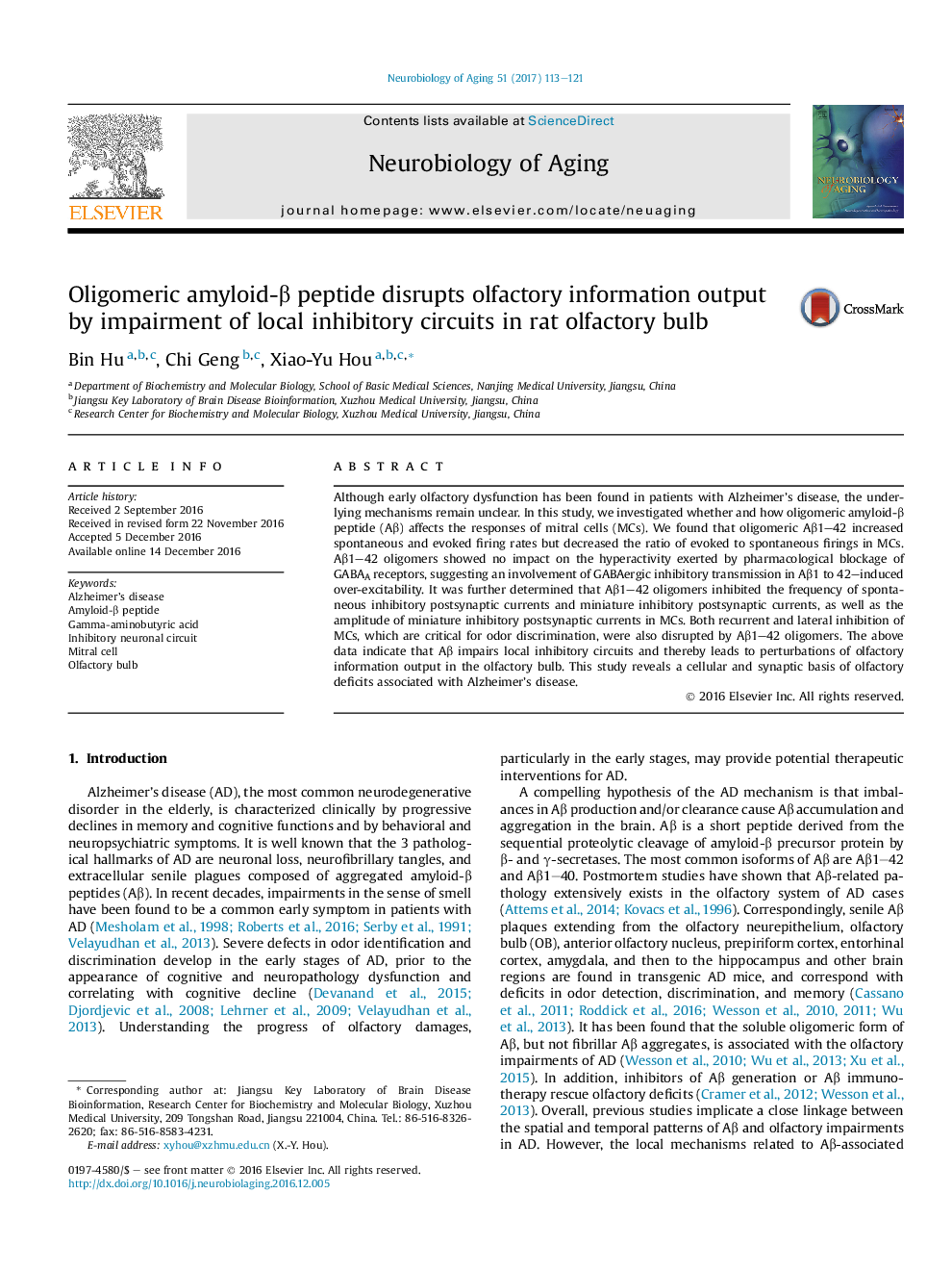| Article ID | Journal | Published Year | Pages | File Type |
|---|---|---|---|---|
| 4932781 | Neurobiology of Aging | 2017 | 9 Pages |
Although early olfactory dysfunction has been found in patients with Alzheimer's disease, the underlying mechanisms remain unclear. In this study, we investigated whether and how oligomeric amyloid-β peptide (Aβ) affects the responses of mitral cells (MCs). We found that oligomeric Aβ1-42 increased spontaneous and evoked firing rates but decreased the ratio of evoked to spontaneous firings in MCs. Aβ1-42 oligomers showed no impact on the hyperactivity exerted by pharmacological blockage of GABAA receptors, suggesting an involvement of GABAergic inhibitory transmission in Aβ1 to 42-induced over-excitability. It was further determined that Aβ1-42 oligomers inhibited the frequency of spontaneous inhibitory postsynaptic currents and miniature inhibitory postsynaptic currents, as well as the amplitude of miniature inhibitory postsynaptic currents in MCs. Both recurrent and lateral inhibition of MCs, which are critical for odor discrimination, were also disrupted by Aβ1-42 oligomers. The above data indicate that Aβ impairs local inhibitory circuits and thereby leads to perturbations of olfactory information output in the olfactory bulb. This study reveals a cellular and synaptic basis of olfactory deficits associated with Alzheimer's disease.
